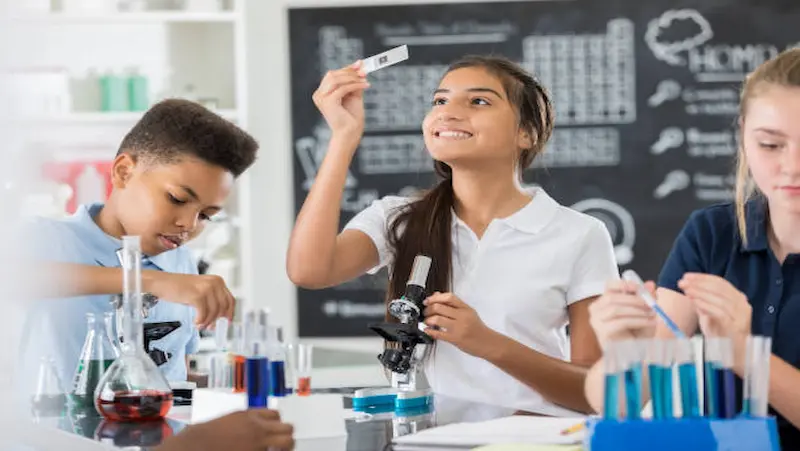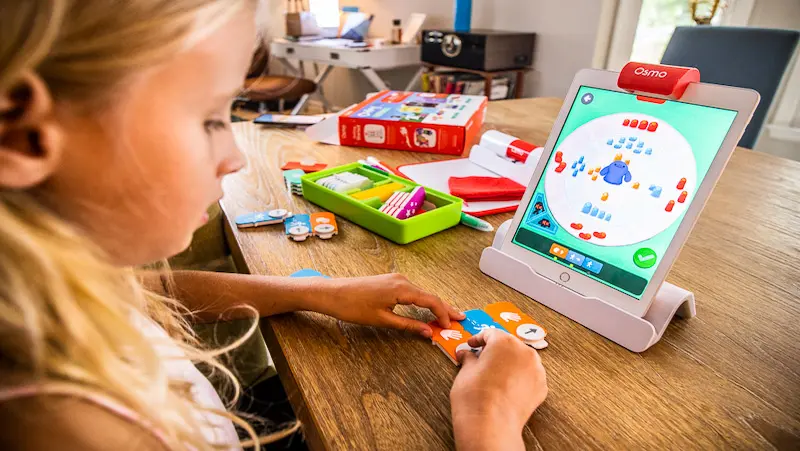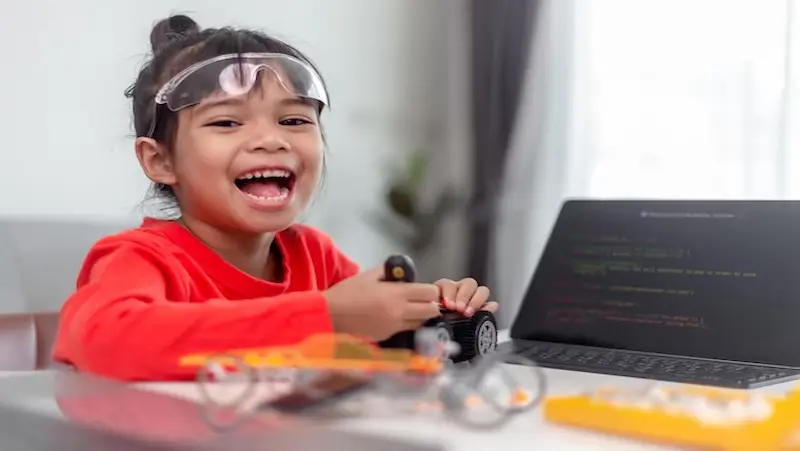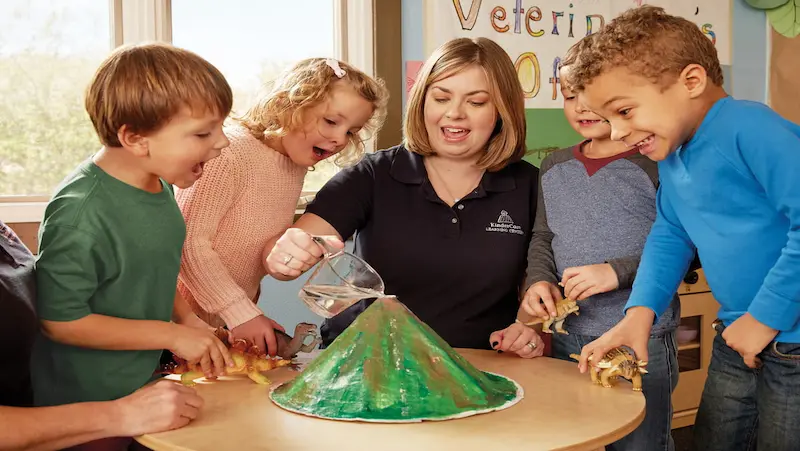Encouraging children’s curiosity and fostering an interest in science can be a rewarding experience. Science kits designed for kids provide hands-on learning opportunities and spark their curiosity through engaging experiments and activities.
Table of contents
Introduction

Science kits are a great way for kids to learn about the world around them in a fun and engaging way. They can help kids develop their critical thinking skills, problem-solving skills, and creativity. Science kits can also help kids develop an interest in science, which can lead to future success in STEM fields.
There are many different types of science kits available, so there is sure to be one that is perfect for every child. Some kits focus on a specific topic, such as biology, chemistry, or physics. Others are more general and cover a variety of scientific concepts. Some kits are designed for younger children, while others are designed for older children or even adults.
No matter what type of science kit you choose, it is important to make sure that it is age-appropriate and that it comes with clear instructions. You may also want to choose a kit that includes safety glasses and other protective gear.
Science kits can be a great way to spark a child’s curiosity about the world around them. They can also help kids develop important skills that will benefit them throughout their lives. If you are looking for a fun and educational way to keep them entertained, science for kids is a great option.
Benefits of Science Kits for Kids

Science kits are a great way for kids to learn about science in a fun and engaging way. They offer a number of benefits, including:
- Hands-on learning: Science kits allow kids to learn by doing. This is a more effective way to learn than simply reading about science in a textbook. When kids are actively involved in the learning process, they are more likely to understand and remember the concepts.
- Fostering curiosity: Science kits can help to foster a love of science in kids. When kids are able to explore and experiment with science, they are more likely to become curious about the world around them. This curiosity can lead to a lifelong interest in science.
- Developing critical thinking skills: Science kits can help kids develop critical thinking skills. When kids are asked to solve problems and make observations, they are forced to think critically about the world around them. This is an important skill that will benefit them in all areas of their lives.
In addition to these benefits, science kits can also help kids develop other important skills, such as:
- Problem-solving skills: Science kits often require kids to solve problems in order to complete the experiments. This helps them to develop their problem-solving skills, which are essential for success in school and in life.
- Teamwork skills: Some science kits are designed to be completed by multiple kids working together. This helps kids to develop their teamwork skills, which are important for working in groups at school and in the workplace.
- Communication skills: Science kits often require kids to write reports or give presentations about their experiments. This helps them to develop their communication skills, which are important for success in school and in the workplace.
If you are looking for a way to help your child learn about science in a fun and engaging way, a science kit is a great option. There are many different science kits available, so you can find one that is right for your child’s age and interests.
BrightChamps provides robotics kits for kids, igniting their curiosity and interests in technology. Our interactive programs foster teamwork skills as children build and program robots, creating an engaging and educational experience.
Different Types of Science Kits

There are many different types of science kits available, each designed to teach children about a different scientific discipline. Some of the most popular categories of science kits include chemistry, physics, biology, and electronics.
Chemistry Kits
Chemistry kits allow children to explore the world of matter and its properties. These kits typically come with a variety of chemicals, lab equipment, and instructions for conducting experiments. Some popular chemistry kits include the Eureka! Chemistry Lab, the National Geographic Chemistry Lab, and the Mel Science Chemistry Lab.
Biology Kits
Biology kits allow children to explore the world of living things. These kits typically come with a variety of materials, such as plants, animals, and microscopes, and instructions for conducting experiments. Some popular biology kits include the My First Lab, the National Geographic Kids’ Biology Lab, and the BioBuilder.
Physics Kits
Physics kits allow children to explore the world of motion, force, energy, and light. These kits typically come with a variety of materials, such as magnets, gears, and pulleys, and instructions for building models and conducting experiments. Some popular physics kits include the Snap Circuits Jr., the LEGO Mindstorms EV3, and the Vernier Physics Explorations.
Electronics Kits
Electronics kits allow children to explore the world of electricity and circuits. These kits typically come with a variety of electronic components, such as wires, resistors, and capacitors, and instructions for building circuits and science projects for kids. Some popular electronics kits include the LittleBits Electronics Discovery Kit, the SparkFun Inventor’s Kit, and the TI MSP430 LaunchPad.
Science kits can be a great way for children to learn about science and develop their STEM skills. They can also be a lot of fun! When choosing a science kit, it is important to consider the child’s age and interests. There are many great science kits available, so there is sure to be one that is perfect for every child.
Choosing the Right Science Kit

Choosing the right science kit for your child can be a daunting task. There are so many different kits on the market, and it can be hard to know where to start. Here are a few tips to help you choose the best science kit for your child:
- Consider your child’s age and interests. Not all science kits are created equal. Some kits are designed for younger children, while others are more challenging and appropriate for older kids. It’s important to choose a kit that is appropriate for your child’s age and interests.
- Think about your child’s skill level. Some science kits are very easy to use, while others require more advanced skills. If your child is new to science, you may want to choose a kit that is on the easier side. As your child gets older and more experienced, you can move on to more challenging kits.
- Look for a kit that is safe. Science kits can sometimes involve dangerous materials, such as chemicals or sharp objects. It’s important to choose a kit that has been safety tested and that comes with all the necessary safety precautions.
- Consider the educational value of the kit. The best science kits are not just fun; they are also educational. Look for a kit that offers a variety of experiments that will teach your child about different scientific concepts.
- Make sure the kit includes clear instructions. No one wants to spend hours trying to figure out how to use a science kit. Make sure the kit you choose includes clear, step-by-step instructions.
Fun Science Experiments for Kids

Here is a selection of exciting and easy-to-do science experiments for kids that can be performed using science kits:
1. Make a Volcano
This is a classic science experiment that is always a hit with kids. To make a volcano, you will need:
- A baking soda volcano kit
- A bowl of water
- Red food coloring
- A spoon
Instructions:
- Follow the instructions that come with your baking soda volcano kit to build the volcano.
- Fill the bowl with water.
- Add a few drops of red food coloring to the water.
- Pour the water into the volcano.
- Add baking soda to the volcano.
- Watch the volcano erupt!
Learning Outcomes:
- This experiment teaches kids about chemical reactions.
- Kids learn that baking soda and vinegar react to produce carbon dioxide gas.
- The carbon dioxide gas causes the volcano to erupt.
2. Make a Rainbow
This is another classic science experiment that is perfect for kids. To make a rainbow, you will need:
- A sunny day
- A garden hose
- A spray nozzle
- A white wall
Instructions:
- On a sunny day, spray water from a garden hose onto a white wall.
- Use the spray nozzle to create a fine mist of water.
- Stand in front of the wall and look at the water droplets.
- You should see a rainbow!
Learning Outcomes:
- This experiment teaches kids about refraction.
- Refraction is the bending of light as it passes through different mediums.
- The water droplets in the air act as a prism and bend the light, creating a rainbow.
3. Grow a Crystal
This is a fun and easy experiment that kids can do at home. To grow a crystal, you will need:
- A crystal growing kit
- A container
- Water
- Salt
Instructions:
- Follow the instructions that come with your crystal growing kit to build the crystal growing container.
- Fill the container with water.
- Add salt to the water until it no longer dissolves.
- Hang a crystal seed in the container.
- Wait for the crystal to grow!
Learning Outcomes:
- This experiment teaches kids about crystal formation.
- Kids learn that crystals are formed when minerals precipitate out of solution.
- The salt in the water causes the crystals to form.
These are just a few of the many fun and easy science experiments that can be performed using science kits. With a little creativity, you can find many other experiments that will keep kids entertained and engaged.
Safety Considerations

Science kits can be a great way for kids to learn about science and have fun at the same time. However, it is important to take safety precautions when using science kits, especially if young children are involved.
Adult Supervision
Adult supervision is always required when using science kits. This is especially important for kits that involve the use of chemicals, sharp objects, or heat. Adults should always read the instructions carefully before allowing children to use a science kit. They should also be close by to supervise the experiment and answer any questions that the child may have.
Safety Gear
Some science kits require the use of safety gear, such as goggles, gloves, and aprons. It is important to make sure that children wear the appropriate safety gear when using a science kit. This will help to protect them from injury in the event of an accident.
Cleaning Up
It is important to clean up any spills or messes immediately after using a science kit. This will help to prevent accidents and keep the work area clean.
Disposal of Hazardous Materials
Any hazardous materials used in a science experiment should be disposed of properly. This may involve following the instructions on the product label or taking the materials to a hazardous waste disposal facility.
First Aid
It is important to have a first-aid kit on hand in case of an accident. The first-aid kit should be stocked with basic supplies, such as bandages, antibiotic ointment, and pain relievers.
Following Instructions
It is important to follow the instructions carefully when using a science kit. This will help to ensure that the experiment is conducted safely and successfully.
Experimenting Safely
Here are some additional tips for experimenting safely with science kits:
- Never eat or drink while working with a science kit.
- Keep long hair tied back.
- Remove jewelry, such as rings and necklaces.
- Be careful not to touch your eyes, nose, or mouth while working with a science kit.
- If you get any chemicals on your skin, wash it off immediately with soap and water.
- If you get any chemicals in your eyes, flush them with water for at least 10 minutes and seek medical attention immediately.
- If you have any questions or concerns about using a science kit, ask an adult for help.
By following these safety precautions, you can help to ensure that your child has a safe and enjoyable experience when using a science kit.
Guidelines and Recommendations

In addition to the general safety precautions listed above, there are a few specific guidelines and recommendations that should be followed when using science kits. These include:
- Read the instructions carefully before beginning any experiment. This will help to ensure that you understand the steps involved and the potential hazards.
- Use the correct materials and equipment. Do not substitute materials or equipment unless you are sure that they are safe to use.
- Work in a well-ventilated area. This is especially important when using chemicals or other potentially hazardous materials.
- Be careful not to spill or splash any materials. If a spill does occur, clean it up immediately.
- Dispose of waste properly. Follow the instructions on the product label or take waste to a hazardous waste disposal facility.
- Wash your hands thoroughly after working with any materials. This will help to prevent the spread of germs.
By following these guidelines and recommendations, you can help to ensure that your science experiments are safe and enjoyable.
Where to Buy Science Kits

Science kits are a great way for children to learn about the world around them. They can help kids develop their critical thinking skills, problem-solving skills, and creativity. There are many different science kits available, so it can be tough to know where to start. Here are a few reputable online and offline stores where parents can purchase high-quality science kits for their children.
Online Stores
- Amazon is a great place to find science kits for all ages. They have a wide selection of kits from different brands, so you’re sure to find one that’s perfect for your child.
- Etsy is a great place to find unique and handmade science kits. Many of the kits on Etsy are designed by teachers and scientists, so you can be sure that they’re high-quality and educational.
- Educational Insights is a company that specializes in educational toys and games. They have a wide selection of science kits for all ages, including kits that teach kids about biology, chemistry, physics, and engineering.
- KiwiCo is a subscription service that sends kids science kits every month. The kits are designed for kids of all ages, and they cover a wide range of topics. KiwiCo is a great way to introduce your child to science in a fun and engaging way.
Offline Stores
- Toy stores often have a selection of science kits. These kits are usually more expensive than the kits you’ll find online, but they can be a great option if you want to see the kits in person before you buy them.
- Educational supply stores often have a wide selection of science kits. These stores can be a great place to find kits that are specific to your child’s interests.
When choosing a science kit for your child, it’s important to consider their age and interests. Some kits are designed for younger kids, while others are designed for older kids. Some kits focus on specific topics, like biology or chemistry, while others cover a wider range of topics. It’s also important to consider the price of the kit. Science kits can range in price from around $10 to $100 or more.
No matter where you buy your science kit, make sure that it’s from a reputable source. There are many low-quality science kits on the market, so it’s important to do your research before you buy. Look for kits that have positive reviews from other parents.
Science kits can be a great way to encourage your child’s love of learning. They can help kids develop their critical thinking skills, problem-solving skills, and creativity. With so many different science kits available, there’s sure to be one that’s perfect for your child.
Conclusion
In conclusion, science kits for kids offer an exceptional way to ignite and nurture curiosity. By providing hands-on experiences, these kits empower children to explore the fascinating world of science and develop critical thinking skills. From conducting experiments to understanding scientific concepts, these kits make learning engaging and interactive.
As children immerse themselves in the wonders of scientific discovery, they not only gain knowledge but also cultivate a lifelong passion for exploration and problem-solving. So, let’s embrace the power of science kits and spark curiosity within our young minds, paving the way for a future generation of brilliant scientists, innovators, and thinkers.
Explore the exciting world of robotics for kids online with BrightChamps. Our interactive platform offers engaging courses that inspire creativity and problem-solving through hands-on robotics projects.
To get your hands on more such educational and free resources on coding for kids, robotics courses for kids, game development, etc., do check out the Brightchamps Page now!
Frequently Asked Questions
Science kits for kids are educational sets containing materials and instructions for conducting hands-on scientific experiments. They are important because they foster curiosity, critical thinking, and a love for STEM subjects from an early age.
Science kits can benefit your child’s learning and development by promoting problem-solving skills, enhancing scientific knowledge, encouraging creativity, and improving their understanding of the world around them.
Yes, there are age-appropriate science kits available for different age groups, ranging from simple experiments for young children to more complex ones for older kids. These kits are designed to match their cognitive abilities and developmental stages.
Children can conduct a wide range of experiments with science kits, including topics like chemistry, physics, biology, electronics, and more. They can explore chemical reactions, build circuits, observe nature, investigate forces, and conduct simple biological experiments.
Science kits are generally safe for kids to use at home. However, adult supervision is recommended, especially for younger children or experiments involving potentially hazardous materials. Always follow the instructions and safety guidelines provided with the kit.
Yes, science kits can help spark your child’s interest in STEM subjects. The hands-on nature of the experiments and the joy of discovery can ignite a passion for science, technology, engineering, and mathematics, paving the way for future learning and career opportunities.
To choose the right science kit, consider your child’s interests, their age and abilities, and the specific scientific topics they enjoy. Look for kits that offer clear instructions, quality materials, and a good balance between educational value and fun.
Quality science kits for kids can be purchased from various sources. Online retailers such as Amazon, educational toy stores, and specialty science retailers often have a wide selection of science kits. Additionally, some museums and science centers may offer kits for sale.

 We are an army of educators and passionate learners from BrightChamps family, committed to providing free learning resources to kids, parents & students.
We are an army of educators and passionate learners from BrightChamps family, committed to providing free learning resources to kids, parents & students.








